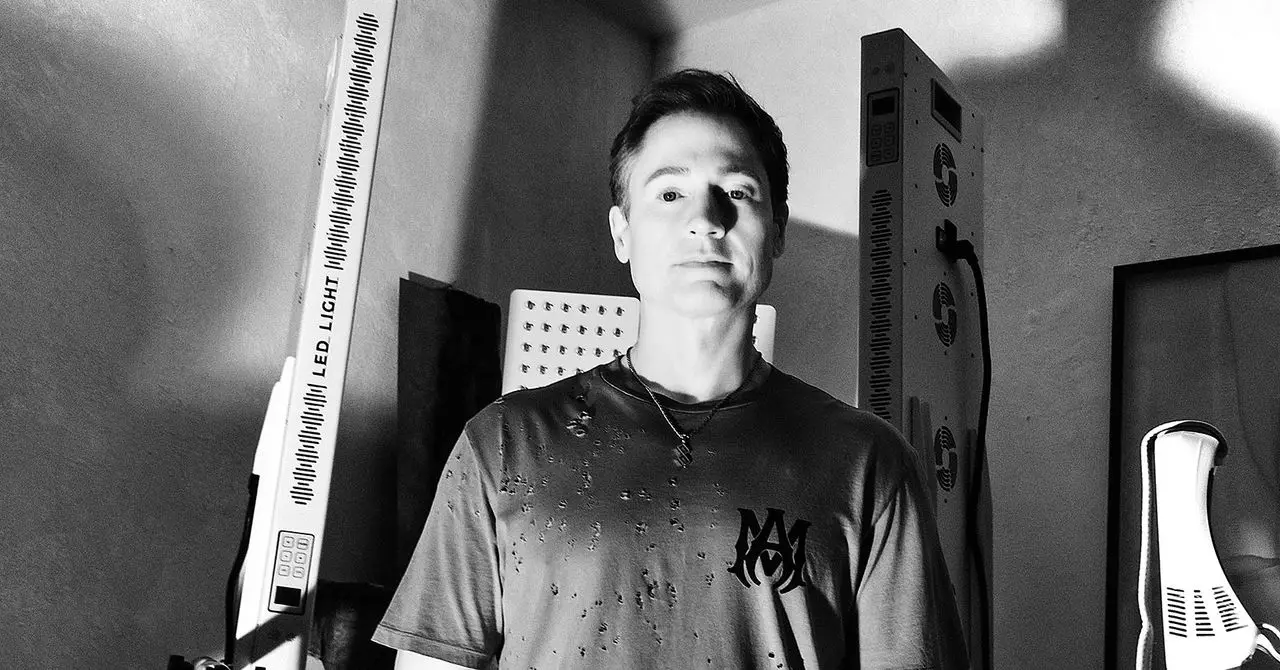In an era obsessed with perpetual youth and ultimate performance, Bryan Johnson exemplifies society’s unyielding pursuit of immortality. His meticulously curated kitchen, filled with pristine fruit and scientific paraphernalia, might appear to symbolize health and vitality. Yet, beneath this surface lies a troubling contradiction: the presence of rotting fruit—an unmistakable metaphor for the hidden rot within Johnson’s obsessive drive. His towering ambition to halt aging manifests in extreme, unproven regimens that blur the line between science and spectacle. While the glossy surface invites admiration, a critical eye uncovers the underlying frenzy—a relentless chase after a mythic state of eternal youth that ultimately reveals its superficiality and potential dangers.
Johnson’s kitchen represents more than just a space for nourishment; it exemplifies a cultural obsession with body perfection and longevity at any cost. His elaborate routines, involving blood transfusions, scans, supplements, and light therapies, reflect a desire to control the biological clock obsessively. But is such hyper-focus on health a sustainable or even sane pursuit? The image of expired fruit alongside pristine produce hints at a broader truth: despite outward appearances of vitality, decay is inevitable. Johnson’s relentless quest suggests an unwillingness—perhaps an inability—to accept natural limits, and in doing so, risks losing sight of a balanced and human approach to aging.
The Paradox of Wealth, Fame, and the Search for Meaning
Johnson’s rise from a tech entrepreneur to a self-proclaimed biohacker illuminates a deeper paradox. His wealth, built on the innovation economy, now fuels a spiritual and physical overhaul that seeks to transcend mortality. The luxurious home, adorned with family photos amid laboratory equipment, underscores the contradictions inherent in such pursuits: a desire for permanence amid the inherently transient nature of life. His public persona, reinforced through social media, Netflix documentaries, and interviews, elevates his own body as a monument to scientific possibility. Yet, in doing so, he often dismisses the inherent imperfections and vulnerabilities that define the human condition.
The very act of commodifying aging—selling hope, promising longevity—raises ethical questions. Is Johnson genuinely motivated by health, or is his quest another form of performative vanity? Certainly, his transparency about his regimen offers an unprecedented window into the life of a man desperate to defy fate. But the underlying issue remains: what does it mean to pursue immortality when the foundation is built on a series of unproven interventions and a culture that monetizes youth? Johnson’s narrative is part of a larger societal trend that equates value with appearance and invincibility, leading us further away from embracing natural aging with dignity and grace.
The Dangers of the Cult of Optimization and Technological Salvation
Perhaps the most troubling aspect of Johnson’s obsession is his deep reliance on technology—not just for health but as the ultimate salvation. His fixation on artificial intelligence as the next holy grail exposes a broader societal trend: the belief that we can engineer perfection through algorithms and lab work. This blind faith in technological solutions distracts from essential philosophical and ethical debates about what it means to be human. It suggests that, through science, we can avoid death altogether, ignoring the possibility that such pursuits might only deepen our estrangement from natural life cycles.
Furthermore, Johnson’s enforcement of confidentiality agreements and his apparent reluctance to accept external scrutiny reveal a burgeoning tendency to conceal vulnerability behind a veneer of invincibility. The emphasis on control, secrecy, and relentless optimization breeds a culture that prizes appearance over authenticity. This can foster an environment where mental health suffers, and genuine human connection becomes secondary to superficial measures of success. The ultimate irony is that in trying to outwit death, Johnson and those like him may be cultivating a life less lived—a sterile, calculated existence devoid of the very imperfections and unpredictability that make life precious.
The Hidden Costs Behind the Dream of Eternal Youth
While Johnson’s narrative might appear inspiring to some, a critical perspective unveils alarming implications. The pursuit of eternal youth often leans into a territory where physical vitality becomes synonymous with moral or personal superiority. This mindset risks marginalizing those who accept aging naturally or cannot afford such extreme interventions, perpetuating a social divide rooted in body autonomy and access to health innovations.
Moreover, the intense focus on individual longevity can foster a narcissistic culture, where aging gracefully is replaced by an obsession with reverse engineering biology. It diverts attention from pressing societal issues—climate change, inequality, mental health—that demand collective effort. Instead of viewing aging as a natural part of life’s cycle, Johnson’s approach implies that perfection and invulnerability are attainable if the right routines, supplements, and technologies are embraced. This belief can dangerously diminish the value of life’s transient, imperfect beauty, equating worth with biological perfection and longevity.
The narrative also inadvertently masks the emotional and philosophical realities of aging: loss, mortality, and acceptance. The pursuit of eternal youth becomes not just a personal endeavor but a cultural obsession that distorts our understanding of what it means to lead a meaningful life. In essence, Johnson’s quest highlights a profound societal reluctance to confront mortality, opting instead for an often futile race against time that may ultimately lead to spiritual emptiness rather than genuine fulfillment.

